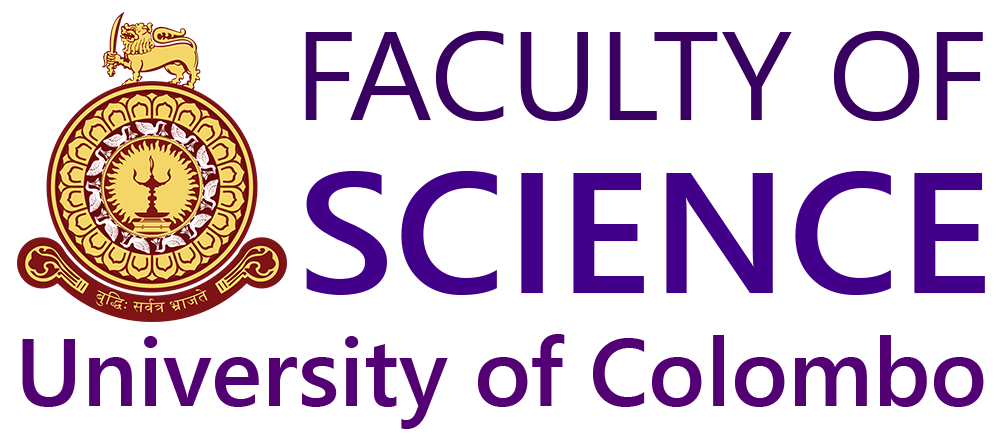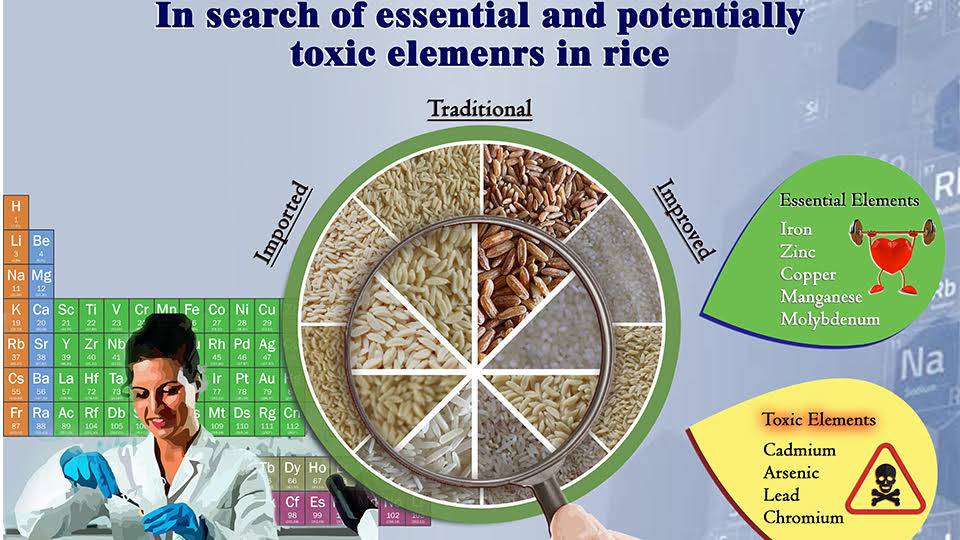A chemical approach to investigate the dietary intake of elements from rice
Being the dietary staple, rice is the main nutritional source of essential trace elements in most Asian countries. However, the prevalence of micronutrient deficiencies is high in many countries where diets are based on staple foods such as maize, wheat, rice, and cassava. They provide more energy but are relatively low in essential elements. In the Sri Lankan market, there exists a great diversity of improved, traditional, and imported rice varieties with unique nutritional values. They differ in grain size (long and short), pericarp colour (red and white), and method of processing (raw, parboiled, and degree of polishing). There is an emerging concern on contamination of rice with potentially toxic elements (arsenic, lead, cadmium, mercury, chromium, nickel etc.) mainly due to anthropogenic influences such as industrial activities and continuous/excessive usage of poor-quality agrochemicals (containing potentially toxic elements as impurities). In addition, climatic conditions, topography, rice variety, soil physicochemical properties, bioavailability of trace elements, biological processes in soils/plants, and agricultural management practices (i.e., fertilization, irrigation, and micronutrient fortification) may affect the bioaccumulation of trace elements in rice. With high awareness on human health among consumers, the selection of rice varieties with better qualities (nutritional and toxicological standpoints) is crucial. Therefore, we performed a comprehensive investigation (during 2018 and 2019) on trace element (essential and potentially toxic) concentrations in commonly consumed rice varieties available in the Colombo district, Sri Lanka while addressing the dietary exposure and health risk assessment. For our assessment, we selected improved (White nadu, White raw, White raw samba, Red nadu, Red raw, Red raw samba, Samba, and Keeri Samba), traditional (Suwadel, Kaluheenati, Pachchaperuman, and Madathawalu), and imported (Basmathi and fragrant rice) rice varieties.
Based on our analysis, arsenic was detected in all traditional, imported, and improved rice categories (in 2018 and 2019) but the arsenic concentrations in imported and improved rice varieties did not exceed the maximum level (ML) proposed by FAO/WHO (0.2 mg/kg). In 2018, 4.2% of traditional rice (i.e., Kaluheenati) exceeded the ML for arsenic. Similarly, 2.1% improved (i.e., Red raw samba) and 4.2% of traditional rice (i.e., Kaluheenati) exceeded ML for lead in 2018. However, none of the potentially toxic elements (arsenic, lead, cadmium, mercury, chromium, and nickel) in rice exceeded the respective MLs in 2019.
Rice varieties that reported relatively high concentrations of potentially toxic elements were parboiled rice i.e., Basmathi (imported), Samba (improved), and traditional rice i.e., Kaluheenati, Madathawalu, Pachchaperuman, and Suwadel. Higher concentrations of essential elements (i.e., iron, zinc, manganese, and copper) were also found in traditional rice with red pericarp (i.e., Kaluheenati, Madathawalu, and Pachchaperuman) than that of other rice varieties.
In 2018, the mean estimated daily intake (MEDI) of lead exceeded the provisional tolerable daily intake (PTDI) value, only for Kaluheenati. Among the studied rice varieties, the highest contribution to the recommended daily allowance (RDA) of iron was reported from Pachchaperuman in both years whereas the highest contribution to RDA of zinc was from Pachchaperuman and fragrant rice in 2018 and 2019, respectively.
Reliable data generated by validated test methods provided an overview of the quality of rice available in the highly populated Colombo district, Sri Lanka. Further, our findings provided an insight into both positive and potentially negative impacts of traditional rice varieties on human health due to their relatively high concentrations of essential and potentially toxic elements. Therefore, we believe that our findings will be vital for authorities in monitoring and regulating national guidelines for potentially toxic elements in rice varieties which are yet to be set to safeguard the consumers.
The beneficial outcome of this study was a collaborative effort between the University of Colombo (UOC), Sri Lanka and the Industrial Technology Institute (ITI), Sri Lanka. This study was conducted as a part of MPhil/PhD degree of Mrs. Gayani Udeshika Chandrasiri (Research Scientist, ITI) under the supervision of Senior Prof. Ranjith Mahanama (Department of Chemistry, Faculty of Science, UOC) and Dr. Kushani Mahatantila (Senior Research Scientist, ITI). Special thanks go to Dr. Pavithra Sajeewani Pitumpe Arachchige.
Reference:
Chandrasiri, G.U., Mahanama, K.R.R., Mahatantila, K. et al. An assessment on toxic and essential elements in rice consumed in Colombo, Sri Lanka. Appl Biol Chem 65, 24 (2022). https://doi.org/10.1186/s13765-022-00689-8
Image prepared by: Mrs. Gayani Udeshika Chandasiri
Written by: Mrs. Gayani Udeshika Chandasiri

